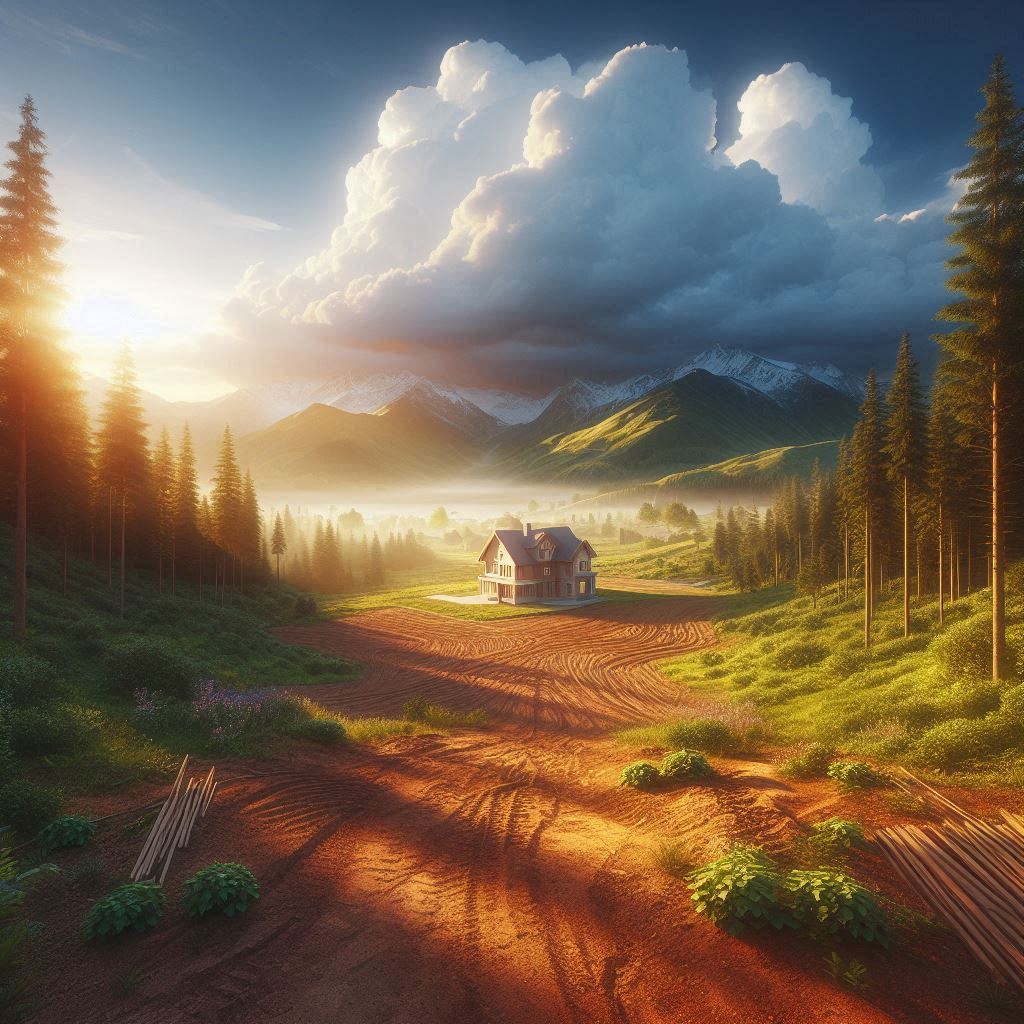
The dream of owning a home nestled in nature—a place away from the hustle and bustle of city life—has captured the imagination of many. For those who are not wealthy but yearn for such a lifestyle, purchasing a plot of land can seem like an appealing and potentially affordable path toward this dream. But is buying land in a rural or natural setting truly a worthwhile investment for someone on a tight budget? Let’s explore the key considerations to help answer that question.
1. Affordability of Land in Natural Settings
One of the primary reasons people look into purchasing land in rural or semi-rural areas is the lower cost compared to developed properties. In many regions, undeveloped land in or near nature is significantly cheaper than homes in suburban or urban areas. Depending on the location, it’s possible to find plots of land for a fraction of the cost of city apartments or houses.
However, the affordability of the land itself doesn’t paint the full picture. While purchasing the plot may be within budget, there are often hidden costs associated with turning that land into a livable space. For example, access to utilities like water, electricity, and sewage systems may not be readily available in remote areas, leading to potentially costly infrastructure development.
2. Development Costs and Challenges
Buying raw land is just the first step. Developing the land—building a home, installing utilities, and ensuring legal approvals—requires time, effort, and money. For those on a budget, this is where the financial burden often increases significantly.
- Utility Infrastructure: Connecting the land to power, water, and sewer systems can be expensive, especially in remote areas. If these services are not already available, alternative solutions like solar power, well water, and septic tanks may be necessary, which can still be costly.
- Road Access: In rural areas, you may need to pay for road access or develop your own roads, especially if the land is in a remote location.
- Zoning and Permits: Depending on the area, zoning regulations could limit the type of structures you can build. Obtaining the necessary permits and meeting local building codes can be both time-consuming and expensive.
For someone without substantial savings or access to construction loans, these challenges may make purchasing and developing land a less feasible option.
3. Long-Term Investment Potential
When it comes to financial return, land near natural areas can be a strong long-term investment. Over time, as urban sprawl pushes outward and people continue seeking quieter, more nature-filled environments, land in rural areas may appreciate in value.
However, predicting land value appreciation is not always straightforward. Rural properties tend to appreciate slower than those in urban areas, and some remote plots may not appreciate at all if infrastructure and local economies do not develop in the surrounding area.
Additionally, land is a less liquid asset than a house or apartment. It can be harder to sell if you need quick access to funds, and undeveloped land may attract fewer buyers than a built property.
4. Lifestyle and Non-Monetary Benefits
For many, the investment in land near nature is not only about financial gain but also about lifestyle. Living close to nature offers a sense of tranquility and connection to the environment that is difficult to replicate in urban spaces. The mental and physical health benefits of outdoor living, including reduced stress, cleaner air, and opportunities for outdoor activities, can be substantial.
These non-monetary benefits are significant for people who value quality of life over financial return. If your dream is to live off the grid or build a homestead, the fulfillment of that lifestyle may outweigh the financial challenges and uncertainties of purchasing land.
5. Financing Options
Securing financing for land is typically more difficult than for traditional home purchases. Many banks are less willing to issue loans for undeveloped land, especially in rural areas. While there are financing options like land loans or seller financing, these often come with higher interest rates and shorter repayment terms compared to conventional mortgages.
For those who are not wealthy, this can create financial strain, particularly if they plan to pay for land development and construction later.
6. Alternative Approaches
If purchasing and developing land from scratch feels too overwhelming or financially unviable, there are alternative ways to get closer to nature without such a significant investment:
- Small Homes or Cabins: Some budget-conscious buyers opt to purchase small, already-developed homes or cabins near natural areas. These often come with fewer development costs and may still offer the proximity to nature you desire.
- Tiny Homes or Mobile Living: For those open to minimalist living, tiny homes or mobile homes are cost-effective ways to live near nature without the long-term commitment of traditional home building.
- Land Leasing: In some cases, leasing land can allow you to live close to nature for a lower upfront cost. While this won’t provide the same financial investment opportunity as owning land, it offers flexibility for those who prioritize lifestyle over long-term ownership.
Conclusion: Is It Worth It?
For those who are not wealthy but dream of owning a home near nature, purchasing a plot of land can be a worthwhile investment, but it depends on individual circumstances and priorities. If you have the patience, creativity, and resources to navigate the financial and practical challenges, it can lead to a fulfilling lifestyle and potential long-term financial gain.
However, the upfront costs of development and the unpredictability of rural land value appreciation mean that this path requires careful planning. It’s essential to evaluate your financial capacity, long-term goals, and willingness to take on challenges. For some, the peace and beauty of living close to nature may outweigh the risks, making the investment a fulfilling one—financially and emotionally.
